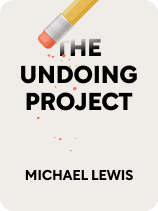

This article is an excerpt from the Shortform book guide to "The Undoing Project" by Michael Lewis. Shortform has the world's best summaries and analyses of books you should be reading.
Like this article? Sign up for a free trial here.
What is prospect theory? How was it developed? What does it explain in regard to how people make decisions and take risks?
In 1973, the Yom Kippur War led Israeli psychologists Daniel Kahneman and Amos Tversky to shift their focus of study. Their ensuing examination of the decision-making process birthed a theory that transformed the way we understand not only decision-making but behavior in general.
Keep reading to learn the background and development of prospect theory as well as what the theory explains.
The Background of Prospect Theory
What is prospect theory? To answer that question, we need to start with a brief history lesson. In 1973, war intervened in Kahneman’s and Tversky’s lives. The Yom Kippur War gave fresh urgency to the problem of uncovering the foibles of the mind. Lewis writes that, in the years following the war, Kahneman and Tversky were particularly troubled by their government’s failure to predict the attack. They shifted their focus to examining the decision-making process and gave birth to a theory that overturned our understanding of human behavior.
(Shortform note: While much has been written in hindsight about failures in military intelligence, the problem of accurate forecasting remains an issue to this day. In Superforecasting, Philip Tetlock and Dan Gardener emphasize that accurate prediction hinges on avoiding cognitive bias, as well as focusing on statistical probabilities and taking a wide perspective of events. However, in Fooled by Randomness, Nassim Nicholas Taleb argues that not only do chaotic situations defy prediction, but that our very predictions themselves change the future.)
The Yom Kippur War began when Syria and Egypt launched a joint attack on October 6, 1973. When the fighting began, Tversky and Kahneman were assigned to the psychology unit embedded in the Israeli army. Lewis states that their primary job was to find ways to improve troop morale. What they in fact were able to accomplish was to let the troops open up about their experiences. Doing so was so heartbreaking that it reaffirmed the psychologists’ desire to find practical applications for their work, specifically to prevent another unexpected war.
(Shortform note: The employment of psychologists for military purposes began during the two World Wars, and not only to help soldiers deal with trauma. Military psychologists are often called upon to evaluate recruits and officer candidates, as well as to provide mental health interventions for soldiers operating under great stress.)
The Development of Prospect Theory
In order to stave off a similar surprise attack in the future, Kahneman and Tversky tried to convince the country’s policymakers to calculate probabilities and play the odds. However, when they tried to teach the government about statistical analysis, they learned that generals and leaders always favor their instincts, even after their instincts have been proven wrong. Lewis says this led Tversky and Kahneman to conclude that people need stories, not numbers. Realizing that providing leaders with information wasn’t sufficient, Kahneman and Tversky decided to examine the decision-making process itself.
(Shortform note: The idea that people value stories over data still holds true today. A 2015 report by PriceWaterhouseCoopers shows that business executives place data third on the list of factors that go into decision-making, after their own intuition and the experience of others. This degree of self-confidence flies in the face of the long list of dangers that come from overvaluing intuition.)
Lewis writes that prior studies of decision-making revolved around hypothetical gambles, such as whether people would prefer an 80% chance of winning $100 or a certain gain of $80. The reigning explanation for how people made decisions was expected utility theory—the idea that people are rational actors who calculate the utility of a situation to make the optimal decision. To address why this theory failed to predict actual human behavior, Swiss mathematician Daniel Bernoulli introduced the idea that people also calculate the psychological value of outcomes. Tversky and Kahneman were of the opinion that decision-making was far more chaotic.
(Shortform note: In Decisive, authors Chip and Dan Heath highlight several mental fallacies that make decision-making more chaotic, namely binary thinking, confirmation bias, clinging to a status quo, and overconfidence. In Nudge, Richard Thaler and Cass Sunstein suggest that those very fallacies often guide decision-making, a result that Kahneman and Tversky may have hoped for.)
In order to build a more accurate model of human decisions, Tversky and Kahneman decided that emotions, not just probabilities and economic value, must be taken into account. Lewis says that, in working on the problem, the emotion Kahneman latched onto first was regret, or, more specifically, that anticipation of regret guides many decisions. Bernoulli’s risk aversion, then, can be seen as the price of avoiding regret. However, they still couldn’t understand what prompted people to make risky decisions.
(Shortform note: While Kahneman would shortly abandon his theory that regret is the primary motivator in making decisions, regret’s psychological power continues to be a subject of much study. In The Paradox of Choice, Barry Schwartz goes into detail on the psychology of regret and the negative impact it can have on our lives. However, he also describes regret as a useful emotion that forces us to take decisions seriously and reduce the harm of our past mistakes.)
A flaw Tversky and Kahneman noticed in economics research was that the decision-making gambles in expected utility theory were always framed as a choice between two gains. Lewis writes that the breakthrough came when Kahneman and Tversky turned the problem on its head and framed experiments with gambles involving loss. What they found was that people are much more open to taking risks if it means avoiding loss instead of making gains.
(Shortform note: Kahneman and Tversky approached the subject of risk from a behavioral and economics perspective, but risk-taking also involves neurological factors. The surges of adrenaline and dopamine produced while engaging in risky activities can become addictive, and some people resort to high-risk activities as a response to emotional pain and depression.)
In 1975 they worked together on creating “risk-value theory,” also known as “prospect theory,” which balanced human decisions based on gains and losses and laid bare the patterns of seemingly irrational human behavior. At the time, economics theory asserted that the irrational errors people made were random and would be corrected by the market. Prospect theory, however, showed that humans are irrational in consistent, systematic ways, and that irrationality is built into the economic market itself. In other words, according to Lewis, prospect theory was the iceberg that could sink all of the prevailing economic thought.
(Shortform note: Decades after prospect theory’s initial publication, it is still widely held as the best predictive tool for explaining how people evaluate economic risk. It has also been applied to problems in political science, organizational management, marketing, and even travel.)
What Prospect Theory Explains
Whereas economists approached the problem strictly in terms of financial gain, Lewis writes that Tversky and Kahneman took a broader tack and discovered that people are far more influenced by the desire to avoid potential loss. Their “prospect theory” explains why we take risks, how we define loss, and how our choices can be influenced by the way risks are presented.
When Kahneman and Tversky began to explore how people reacted to possible losses rather than theoretical gains, they learned the drive to avoid loss is very strong. Lewis says that, in order for subjects to accept a gamble with a potential loss, the promised payout has to far exceed the possible cost they might incur, as it does when playing the slots at a casino. Generalized more broadly, people dislike losing what they have far more than they enjoy getting what they want.
(Shortform note: The promise of large payouts for relatively small risks is common to both Las Vegas and Wall Street, leading to what’s known as the casino mentality of investing. This mentality contributed to the 2008 global financial crisis when lenders were encouraged to make high-risk investments disguised as low-risk opportunities. Nevertheless, there are those who still recommend gambling strategies in financial investment.)
Tversky and Kahneman also discovered that people react to changes in value, not the absolute value, of their situation. For example, if Bob is demoted to a middle management position, while Lucy is promoted into middle management, Lucy is happy while Bob is upset, even though they both now hold the same job. Lewis points out that the determining factor is the change in each person’s status quo, and it matters how that status quo is framed.
(Shortform note: In framing wealth, most people perceive “the rich” to be those earning more than themselves, regardless of their personal income. Investor Jacob Schroeder says that by using the framing effect on yourself and choosing to look for potential gains even in negative situations, you can make better choices about your wealth and overall happiness. This echoes the advice of Norman Vincent Peale, who contended In The Power of Positive Thinking that happiness is rooted in a mindset you can choose to adopt by reframing your outlook on life.)
In summary, Kahneman and Tversky found that people are risk-averse when considering gains, and more risk-taking when facing a loss. Therefore, Lewis says, our judgments can be manipulated depending on whether our circumstances are framed as positive or negative in relation to our perceived status quo. For example, if Lucy expects a $5,000 bonus, but then receives only $4,000, her gain is perceived as a loss. (Shortform note: What’s key to our perception of loss vs. gain is our individual reference point from which each is measured. Business professors have used this concept in the investment market to determine whether stocks are over- or undervalued.)
“Framing,” it turns out, is a powerful tool that can be employed by businesses marketing goods, politicians swaying votes, or doctors persuading patients to have surgery. Lewis relates that Tversky and Kahneman’s results led to an axiom—we don’t choose between options; we choose between how those options are described.
(Shortform note: Being aware of the power of framing is a useful tool for reminding us that anyone presenting information may have an unspoken agenda. In Nudge, Richard Thaler and Cass Sunstein explicitly lay out a program on how to use framing to advance a particular political agenda. Tools they suggest for reframing political decisions include offering “default” choices, providing clear links between decisions and outcomes, and narrowing the number of options to choose from.)

———End of Preview———
Like what you just read? Read the rest of the world's best book summary and analysis of Michael Lewis's "The Undoing Project" at Shortform.
Here's what you'll find in our full The Undoing Project summary:
- The mental errors that skew your daily decisions
- How to avoid the unconscious pitfalls of the mind
- How Daniel Kahneman and Amos Tversky formed their famous partnership






